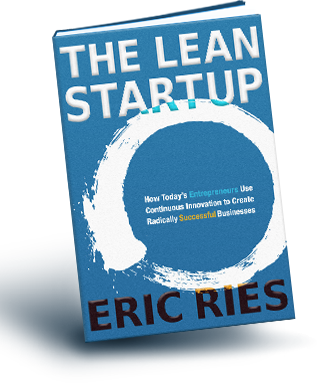Lessons from The Lean Startup
Lessons from The Lean Startup

I recently finished reading Eric Ries’ book The Lean Startup: How Today’s Entrepreneurs Use Continuous Innovation to Create Radically Successful Businesses.
Although I am a little late to the game on this book (it was first published in 2011) and the title is almost as long as the title of the book I wrote years ago during my first entrepreneurial venture trying to sell wellness to lawyers (Lawyer Wellness Is NOT An Oxymoron: Why Tomorrow’s Top Lawyers Must Embrace Wellness Today-And What You Need To Do To Be One Of Them – good lord, what was I thinking with THAT title???), Ries’ book provided some valuable lessons I can apply to my newest venture. Here are a few of them:
- “If you build a product nobody wants, it doesn’t matter if it’s on time and on budget.” The Lean Startup model is about using the scientific method to build a sustainable business around a new set of products or services. It stresses the importance of “validated learning”: constantly experimenting to test your assumptions and hypotheses about your product/service and your market. There’s no greater waste of time and money than creating a product that nobody wants.
- Test early and often. The book teaches us to use the Build-Measure-Learn (BML) feedback loop. Build your minimum viable product (with emphasis on minimum), use experiments, surveys, and “getting outside the building” techniques to talk to your customers so that you can measure what they like and what they don’t, and then learn from those results in order to improve your product. Then you do it all again by incrementally improving your product (build), testing it with your market (measure), and taking stock of the results (learn).
- Small batches. In order to use BML most effectively, don’t wait too long to test. Test with a small batch of your product to make sure you’re on the right track so that you don’t build a big batch that turns out to be useless or that doesn’t resonate with customers like you hoped it would.
- Innovation accounting. This was probably the most innovative (and likely challenging to implement) lesson from the book. Lean startups need to get away from traditional accounting metrics that measure progress, and towards metrics that measure how much you have learned through your validated learning process. A startup that has some early revenue but that isn’t learning much about their product-market fit isn’t as valuable (or as sustainable) as one without revenue but that is learning rapidly from their customers how to improve their product for longer-term success.
- The three growth engines. Your startup not only needs to have a value hypothesis (why your customers will buy from you), but also a growth hypothesis (how your business will grow). Ries explains that the three types of growth engines are paid (e.g. the monthly subscription model), viral (e.g. built in to the sign up process is a referral system via social media), and sticky (e.g. once you sign up or buy the product, it’s more painful to switch to a competitor than to stick around.)
- The 5 Whys. This is a strategy that helps owners and leadership teams get to the root of problems that sprout up in the business. The theory is that it takes asking the question Why? five times before you can understand what’s really causing the problems you see at the surface of your business. For example, what appears to be a cash flow problem could really be a problem with the internal process for accounts receivable, or what appears to be a people problem could really be an issue with the onboarding process for new hires. Asking the 5 Whys and getting to the root of the problem can help solve nagging problems once and for all.
- We’re all startups. The author argues throughout the book that The Lean Startup method can and should be applied whenever a new product or service is being developed, whether that’s in an actual startup or in an established business that develops new sources of revenue. So don’t be fooled by the title; there are lessons in this book for all entrepreneurs and members of their leadership teams.



